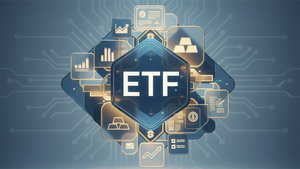
The global automotive industry is on the verge of a seismic shift. Honda Motor Co., Ltd. (NYSE: HMC), Nissan Motor Co., Ltd. (OTCMKTS: NSANY), and Mitsubishi Motors Corporation (OTCMKTS: MSBHY) have started on a path toward a potential merger. This merger would be a strategic alliance that is poised to create the world's third-largest automaker. The collaboration establishes a united front against the increasing competition, especially from Chinese electric vehicle (EV) manufacturers. This strategic initiative is a significant move to establish a dominant position in the automotive industry of the future.
The Proposed Mega-Merger
Honda and Nissan have taken the first formal step towards this transformative alliance by signing a Memorandum of Understanding (MOU).
This agreement initiates six months of in-depth discussions and exploration of the intricacies of a merger. Mitsubishi Motors, already a partner in an existing alliance with Nissan, is also set to participate, with its specific role to be determined soon.
The proposed structure envisions a joint holding company listed on the Tokyo Stock Exchange, under which Honda and Nissan will operate as wholly-owned subsidiaries.
This arrangement aims to streamline operations, consolidate resources, and foster a unified strategic direction. Subject to securing the necessary regulatory approvals and shareholder agreements, the target completion date for this ambitious merger is set for August 2026.
Strategic Rationale: A Transforming Industry
The automotive industry is undergoing unprecedented transformation, driven by the accelerating shift towards electric vehicles (EVs) and the development of autonomous driving technologies. This transition necessitates substantial investments in research and development (R&D), placing immense pressure on automakers worldwide.
The proposed merger between Honda, Nissan, and Mitsubishi is a strategic response to these evolving market dynamics. By pooling their resources and expertise, the three companies hope to accelerate their EV development programs and enhance their competitive edge in this rapidly growing market segment. The merger is also driven by increasing pressure from Chinese EV manufacturers, particularly in the Chinese market.
A significant driver behind this strategic alliance is the intensifying competition from Chinese automakers. Companies like BYD (OTCMKTS: BYDDF) have made significant strides in EV technology and are rapidly gaining market share, domestically and internationally, through aggressive pricing and technological advancements. Both Honda and Nissan have experienced declining market shares in China, a crucial market for global automakers. By joining forces, they aim to leverage their combined resources to better compete with these emerging rivals.
Nissan, in particular, has faced considerable financial headwinds in recent years, including declining sales, mounting debt, and profitability challenges. The merger offers Nissan an opportunity to tap into Honda's more stable financial footing and leverage its technological expertise. Honda, while financially stronger, recognizes the strategic imperative of collaboration in the face of industry-wide disruption. The merger presents an opportunity for Honda to proactively adapt to the changing market terrain and secure its long-term competitiveness.
Unpacking the Synergies: The Power of Three
The proposed merger promises many synergies that extend beyond cost savings. By sharing vehicle platforms, the companies can significantly reduce development costs and accelerate the time to market for new models. Joint R&D efforts, especially in the crucial areas of EV and autonomous driving technologies, will enable them to pool resources, share expertise, and avoid duplicative efforts. Streamlining procurement processes and optimizing supply chains will further enhance cost efficiency.
On the operational front, the merger will facilitate the optimization of manufacturing capacity utilization across the three companies' production facilities. This consolidation is expected to improve production efficiency, reduce redundancy, and enhance overall operational effectiveness. The integration and standardization of operational processes will further contribute to a more streamlined and agile organization.
The merged entity will also benefit from an expanded global presence. By leveraging their combined market reach, they can potentially increase market share in key regions such as North America, Europe, and Asia. In particular, the companies aim to strengthen their position in the critical Chinese market, where they have faced increasing pressure.
The combined R&D capabilities of Honda, Nissan, and Mitsubishi will position the new entity as a major player in the development of next-generation automotive technologies. This technological prowess will be crucial for competing in the evolving EV and autonomous driving segments. Finally, the merger will establish a strong talent foundation for intelligence and electrification, pooling expertise from all three companies to drive innovation.
Potential Roadblocks
Despite the strategic rationale and potential benefits, the proposed merger is not without its challenges. Integrating large-scale operations across three distinct corporate cultures is a complex undertaking filled with potential pitfalls. The history of the automotive industry is filled with examples of mergers that failed to live up to their initial promise, such as the ill-fated Daimler-Chrysler tie-up. Effective leadership, clear communication, and meticulous integration planning will be paramount to the success of this merger.
Furthermore, while the target completion date of August 2026 is ambitious, it raises concerns about whether the merged entity can move quickly enough to capitalize on the rapidly evolving EV market. Full synergy realization may take even longer, extending beyond 2030. In the meantime, competitors, particularly the agile and fast-growing Chinese EV makers, are not standing still. To remain competitive, the merged entity will need to demonstrate a swift and decisive approach to EV development and deployment.
A Bold Bet on the Future
The proposed merger between Honda, Nissan, and Mitsubishi represents a bold strategic gamble, a calculated bet on the future of the automotive industry. By combining forces, these three Japanese auto giants are hoping to create a global powerhouse capable of competing at the highest levels.
The merger has the potential to reshape the competitive terrain, accelerate the transition to EVs, and drive innovation across the industry. However, investors and industry observers should watch closely as this transformative alliance unfolds, monitoring its progress toward regulatory approvals, integration milestones, and, ultimately, its impact on the global automotive stage. The merger's outcome could very well determine the fortunes of these three automakers for decades to come, making it a pivotal moment in the history of the automotive industry.





